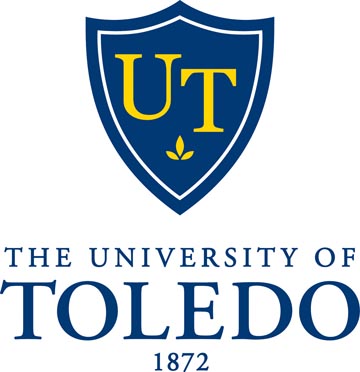The University of Toledo is among eight Ohio universities to receive a total of $1.9 million from the Ohio Department of Higher Education’s Harmful Algal Bloom Research Initiative.
The Harmful Algal Bloom Research Initiative, jointly managed by UT and Ohio State University, is funding 13 collaborative research projects to provide solutions for the harmful algal blooms that affect Lake Erie, Grand Lake St. Mary’s, Buckeye Lake and other fresh water bodies in and around Ohio.
 The research projects announced last week focus on tracking the sources and movement of harmful algal blooms, ensuring safe drinking water, protecting public health, and providing critical education and outreach for stakeholders dealing with both upstream and downstream harmful algal bloom issues.
The research projects announced last week focus on tracking the sources and movement of harmful algal blooms, ensuring safe drinking water, protecting public health, and providing critical education and outreach for stakeholders dealing with both upstream and downstream harmful algal bloom issues.
This is the second round of Harmful Algal Bloom Research Initiative Awards. The first $2 million in awards, released in February 2015, supported 18 interdisciplinary, multi-university research projects — eight of which are led by UT — that are in progress.
“[The Harmful Algal Bloom Research Initiative] was created in the aftermath of the 2014 Toledo water crisis to provide near-term solutions for the full suite of issues surrounding harmful algal blooms,” Chancellor John Carey said. “Guided by the technical needs of state agencies at the front lines of the [harmful algal bloom] crisis, Ohio research universities are the engines for creating new knowledge, new technologies and new approaches to give us both short-term assistance and long-term solutions.”
Each project funded by the initiative consists of multiple university partners, and state funds have been matched at least one to one by participating universities.
“These awards to our universities also serve to train the next generation of Ohio scientists who will be called upon to address future environmental challenges,” Carey said.
The UT research projects are:
• “Characterization of Recreational Exposures to Cyanotoxins in Western Lake Erie Basin” led by Dr. April Ames, assistant professor in the Department of Public Health and Preventative Medicine;
• “Harmful Algal Bloom Avoidance: Vertical Movement of Harmful Algal Blooms in Lake Erie” led by Dr. Thomas Bridgeman, associate professor in the Department of Environmental Sciences;
• “Discovery of Enzymes and Pathways Responsible for Microcystin Degradation” led by Dr. Jason Huntley, assistant professor of medical microbiology and immunology; and
• “Evaluating Home Point‐of‐Use Reverse Osmosis Membrane Systems for Cyanotoxin Removal” led by Dr. Glenn Lipscomb, professor and chair of the Department of Chemical and Environmental Engineering.
Ongoing activities funded by the first round of the Harmful Algal Bloom Research Initiative include the development of an early warning system for bloom hazards in the western Lake Erie basin, a phosphorus fingerprinting technique to determine the origin of nutrient runoff, alternative water treatment tools to detect microcystin and other toxic algal byproducts, and a better understanding of the exposure of humans to toxins from fish and fresh produce.